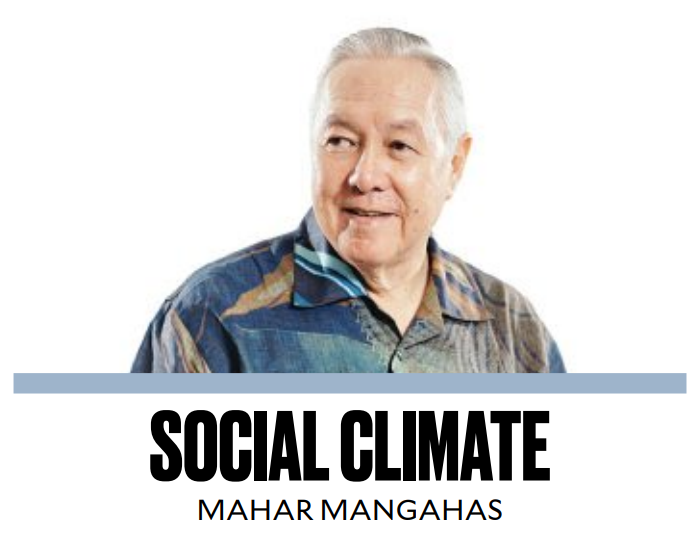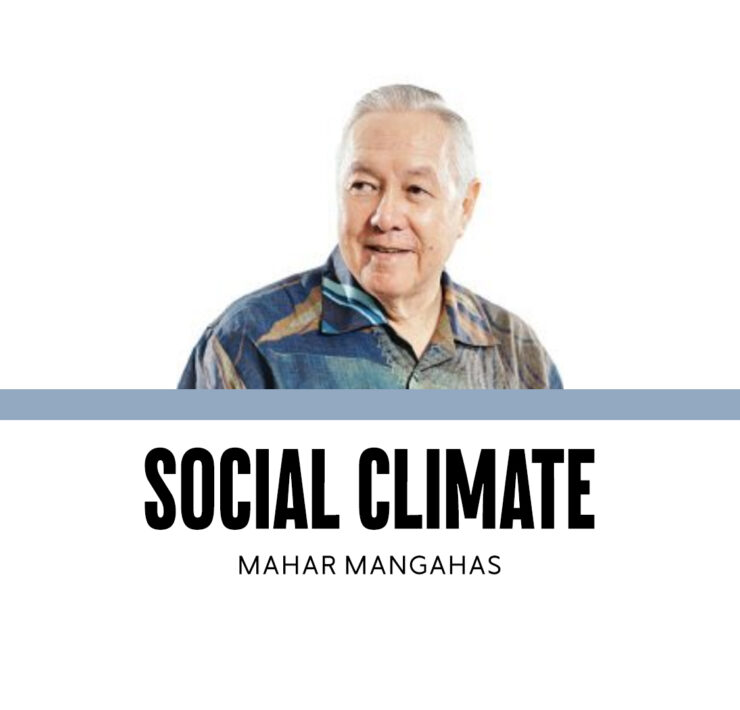Record-low New Year fear

Late each year, since 2000, Social Weather Stations (SWS) has asked Filipinos nationwide whether they will greet the coming year with Hope or with Fear (ang darating na taon ba ay inyong sasalubungin nang may pag-asa o may pangamba). What’s new this year is that the 3 percent answering “fear” is the lowest of the 24-year series.
As a matter of fact, the precise numbers, up to one decimal point, are: Hope, 96.2; and Fear, 3.4. The 0.4 balance is NA/RA, no answer/refused to answer. The numbers in Table 1 of the SWS report are correctly rounded to the nearest percentage point (“Social Weather Report: “96% of Filipinos enter New Year with Hope, the highest since pre-pandemic 2019,” www.sws.org.ph, 12/28/23). Table 1 shows that the 96-percent Hope of 2023 had already happened in 2017 and 2019. However, both times the Fear was 4 percent, correctly rounded.
At the start of the series in December 2000, the hopeful were 87 percent, and the fearful were 13 percent. Fear was in double-digits 6 times: in 2000, 2001, 2003, 2004, 2005, and 2009. It peaked at 18 percent in 2004, when Hope bottomed at 81 percent.
But the percentage fearful has been single-digit since 2010. In the past 15 years, it was at most 8 (in 2015 and 2018). Its previous bottom of 4 was in 2011 and 2017. In pandemic years 2020 and 2021, it was only 7; then it fell to 5 in 2022.
Hopefulness for 2024 is now 97 percent in Balance Luzon and the National Capital Region, 96 percent in Mindanao, and 93 percent in Visayas. It is slightly weaker among elementary dropouts (at 93 percent) and the youth 18-24 (at 94 percent).
Naturally, the people’s hopefulness for the coming year and their high expectations of happiness at Christmas are related to each other.
At present, the Filipino people are as ready and eager for economic progress in the new year as they were before the pandemic. But whether the economy of 2024 will be beneficial for most of them is not entirely in their hands.
In the first place, poverty and hunger were already very serious before the pandemic struck. The new SWS numbers for economic deprivation at the close of 2023 will be published soon. Suffice it to say that the Philippines was not out of the woods in 2019, and is likewise not out of the woods at present.
Secondly, it is very clear, from the evidence of over a hundred national surveys, that only a small portion of the extensive growth in the gross national product over the past four decades has trickled down to poor people.
The scale of general economic growth is relevant only to the upper one-fourth of Filipino families, who are on the safe side from poverty. The second quartile lives precariously. The third and fourth quartiles are the poor and very poor.
What has really mattered, instead, is the inflation in the cost of living, particularly the cost of food. This implies the need for the continuation of careful control over the supply of Philippine money and a deliberate openness to the importation of consumer goods, particularly food, from abroad.
Self-sufficiency in food, or in anything else for that matter, does not require self-sufficiency in producing such items domestically. Exporting enough products and services in which the country has a comparative advantage, thus earning the wherewithal for purchasing imports, is equal to self-sufficiency.
The types of investments most urgently needed are those that quickly enhance the income-earning capacity of the poor. Evidence-based research shows that well-targeted subsidies, either conditional or unconditional, do work; they are investments that pay off.
For the new year, making sure that no children below age 5 go hungry should be a priority investment. Local governments that are able should not wait for the national government to move before acting on this matter themselves. There should be feeding programs in poor communities and schools.
Children should stay in school until they at least finish junior high school (JHS). Have school buses/jeepneys to lessen families’ cost of hatid-sundo. Put free internet in poorer areas ahead of richer ones.
Aim immediately for zero dropouts from elementary school. Aim to lower JHS dropouts from the present 40 percent to only 10 percent, within six years. Aim for JHS graduates at 40 percent, senior high school grads at 30 percent, and college grads at 20 percent.
What’s happening to wages? Doing research on actual compensation received by workers is unnecessarily difficult because data from the Labor Force Surveys while being collected, are not being published.
I think that wages of the unskilled and semi-skilled, in particular, should not be merely assumed to grow in line with the cost of living, but actually targeted to do so. High wages should be seen not as a handicap, but as a sign of economic success.
A Happy New Year to one and all!
—————-Contact: mahar.mangahas@sws.org.ph.
Dr Mahar Mangahas is a multi-awarded scholar for his pioneering work in public opinion research in the Philippines and in South East Asia. He founded the now familiar entity, “Social Weather Stations” (SWS) which has been doing public opinion research since 1985 and which has become increasingly influential, nay indispensable, in the conduct of Philippine political life and policy. SWS has been serving the country and policymakers as an independent and timely source of pertinent and credible data on Philippine economic, social and political landscape.
















